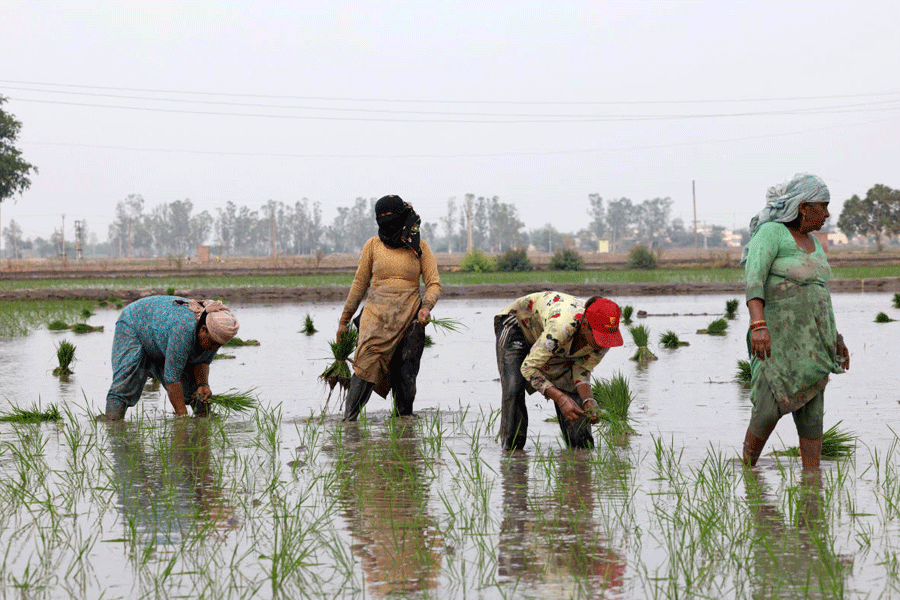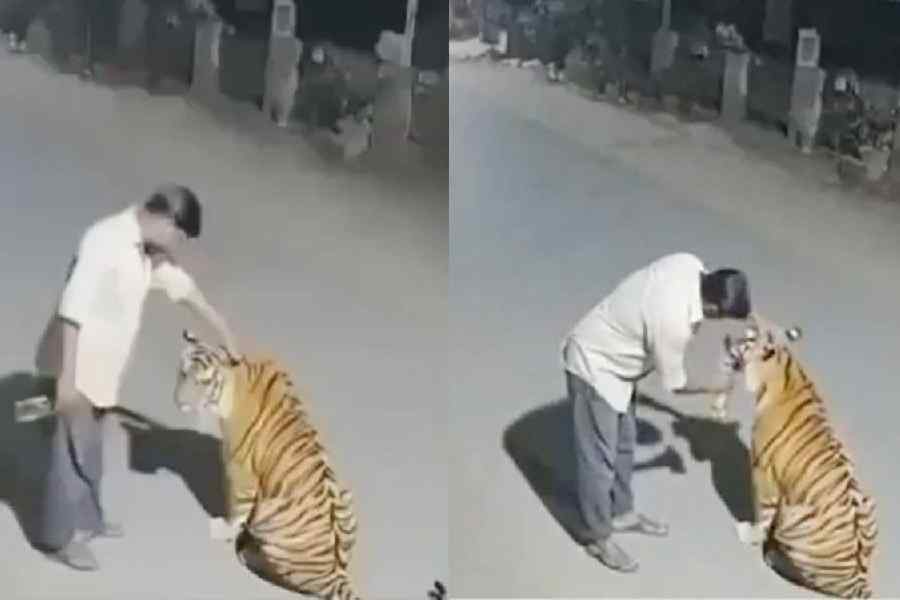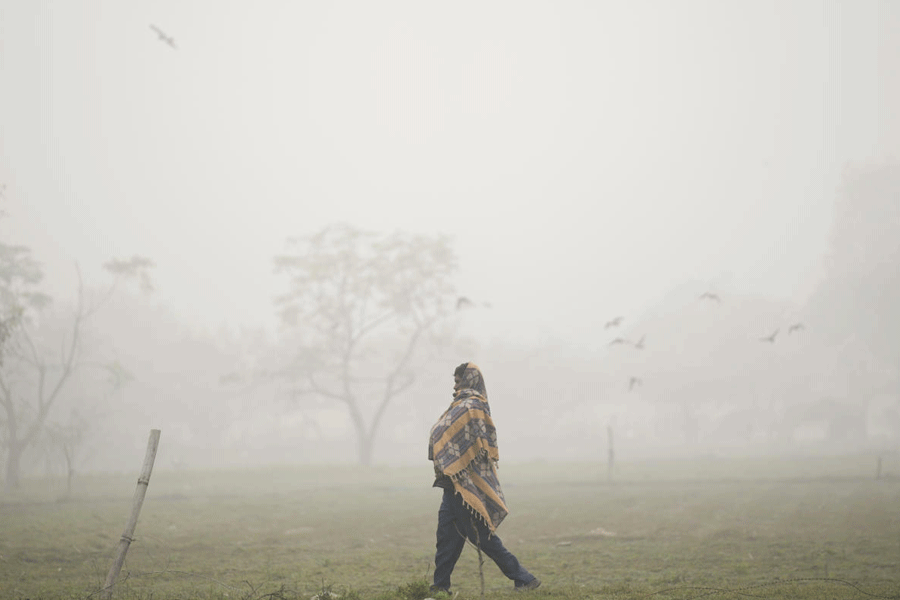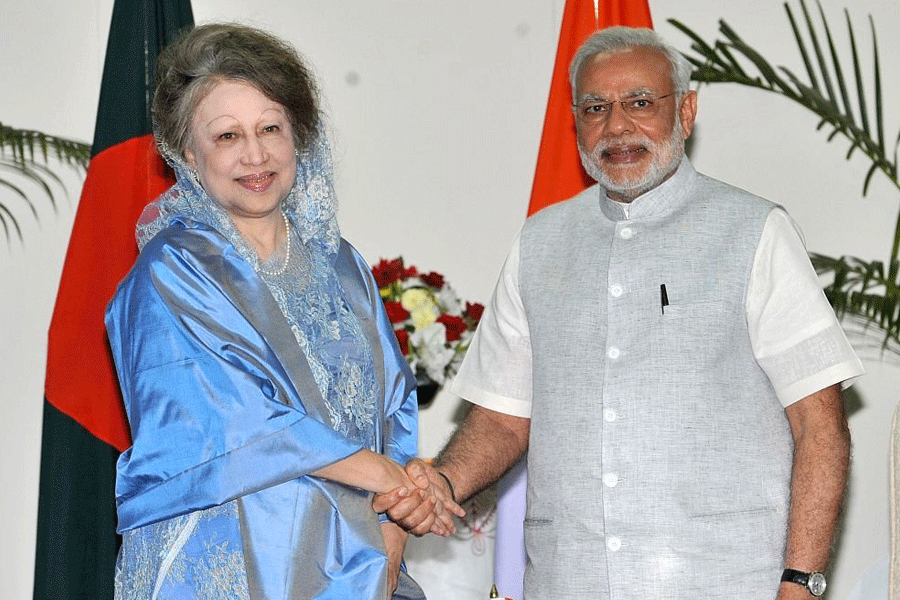|
|
Ruchira Panda’s khayal in Raga Patdeep (picture) was the most memorable offering of the three-day music conference organized by Paramparik to commemorate the centenary of Sangitacharya Tarapada Chakraborty (1909-75). I had missed the first day (Nov 28, Nazrul Mancha), which had the illustrious line-up of Manas Chakraborty, Buddhadev Dasgupta, Hari Prasad Chaurasia, and Rajan and Sajan Mishra among others. However, in spite of some sterling performances on the final two days (Dec 5 and 6, Rabindra Sadan), Panda’s robust yet tender approach to the late-afternoon raga stood out for its delicate balance between soft melodic patterns and powerful virtuoso singing. Her badhat, steeped in the Kotali tradition, was meditative but shimmering with unexpected outbursts of fast-paced sargams and heavy gamaks. The taankari in the drut composition was of a superior order.
Earlier that day, Manilal Nag had struggled with his alap in Bhimpalasi, which, with its tuneless and haphazard progression, went haywire pretty soon. The gats were no better, except for the feisty saath-sangat, served up for the audience’s delight and duly greeted with thunderous applause. Rashid Khan’s Puriya Dhaneshree, later that evening, was richly evocative. Khan’s resonant voice covered the full mandra-saptak, unfolding the melancholy raga at a regal pace. As usual, the ustad’s mastery of complex taans and sargams was breathtaking, although the melodic flow was occasionally marred by the poor vocal support from his disciple. Khan ended with a drut khayal in Sohini, which has become a routine with him, and, after further cajoling by the audience, the customary encore of a Pahadi dadra.
On the final day, Subhasish Mukhopadhyay started with Devsakh, a beautiful amalgamation of Kanada and Sarang, rarely heard these days. Unlike the Agra and Jaipur-Atrauli versions, Mukhopadhyay (a disciple of Manas Chakraborty) sang a more familiar form of the raga, pivoted on the crucial komal gandhar/ pancham sangati. Strong shades of Megh and Mian ki Malhar hovered over his interpretation though, the latter almost announcing its presence by the startling appearance of a strong suddha nishad in the antara. Mukhopadhyay’s exposition was, in all, engrossing, particularly the bol-bant towards the end. However, his taans, though high on speed, were a bit low on precision. He concluded with a khayal in Madhumeladhwani, a raga created by his guru, based predominantly on Madhukauns but blossoming into myriad other forms. The tabla-laharas by Sanjay Mukherjee and Swapan Chaudhuri on the second and the third days respectively (both of them played teentaal) were greeted, quite expectedly, with rapturous applause.
Amiya Ranjan Bandopadhyay’s Multani, on the final day, was distinguished by its Himalayan calm and the artist’s inward-looking style, with no thought of pleasing the crowd, concentrated solely on elaborating each note with delicate care. A similar elegance marked his khayals in Saraswati. Although Shreela Bandopadyay set out an appropriately sombre ambience for her bada khayal in Marwa with her haunting badhat, she seemed to struggle a bit as the tempo increased. Shiv Kumar Sharma ended the conference with a superb alap-jod-jhala in Jog. It was followed by stupendous spells of laykari in the rupak taal and teentaal gats. He was brilliantly supported by Anindo Chatterjee on the tabla.












